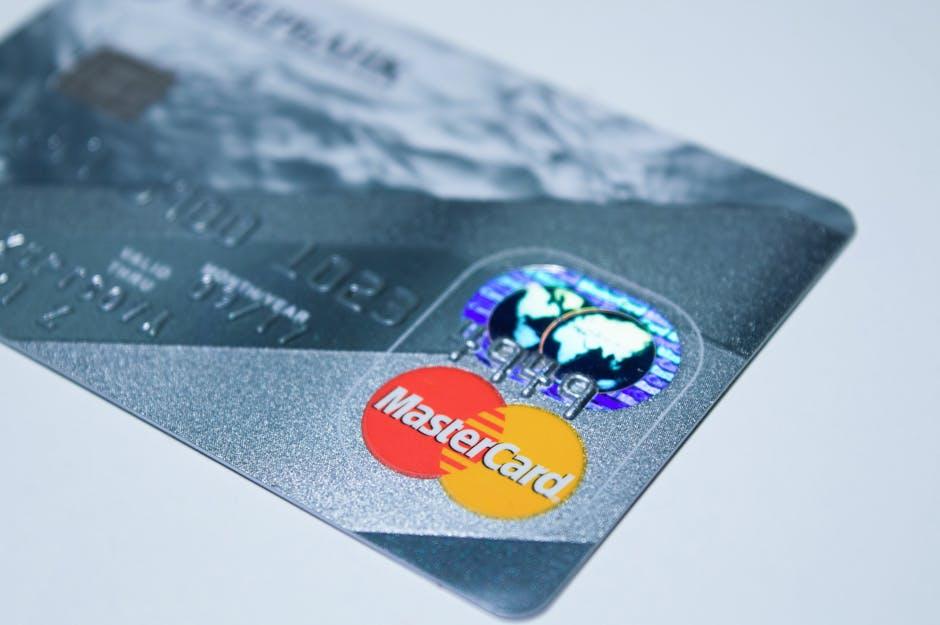In today’s fast-paced consumer landscape, credit cards offer convenience and opportunities for smart shopping. However, amidst the allure of rewards and cash back, many find themselves unwittingly stepping into costly pitfalls. As we approach 2025, it’s essential for savvy shoppers to equip themselves with the knowledge to navigate the credit card landscape effectively. From managing balances to understanding payment deadlines, avoiding common credit card mistakes can be the key to maintaining a healthy financial profile and maximizing the benefits these tools provide. This article will explore the must-know blunders to dodge in the year ahead, ensuring that your financial journey remains both rewarding and secure.
Navigating the Fine Print: Understanding Terms and Conditions
Understanding the fine print of credit card agreements is crucial for making informed financial decisions. While offers may sound appealing at first glance, it’s essential to delve deeper into the terms and conditions that govern your credit usage. Here are key aspects to pay attention to:
- Annual Percentage Rate (APR): This is the cost of borrowing expressed as a yearly interest rate. Different transactions may incur varying APRs – purchases, balance transfers, and cash advances can each have distinct rates.
- Fees: Look out for various fees such as annual fees, late payment fees, and foreign transaction fees. These can significantly increase the overall cost of using your card.
- Credit Limit: This is the maximum amount you can charge to your card. Exceeding this limit can lead to over-limit fees and negatively impact your credit score.
- Grace Period: Familiarize yourself with how long you have to pay your bill before interest accrues. Missing this window can lead to interest charges affecting your balance.
- Reward Structures: If your card offers rewards, understand how you earn points or cash back. Some categories may offer higher rewards but come with specific spending requirements.
It’s also advisable to look for variable versus fixed rates.
| Rate Type | Description |
|---|---|
| Fixed Rate | Your interest rate remains unchanged over time, offering predictability in payments. |
| Variable Rate | Your interest rate can fluctuate based on market conditions, which may lead to increased costs. |
Lastly, be aware of payment allocation methods. If you have balances at different APRs, the method your issuer uses to apply your payments can impact how much interest you pay over time. Some may apply payments to the lowest-interest balance first, while others may allocate based on transaction date.
In summary, navigating the fine print requires vigilance. Always read through terms and conditions carefully and ask questions if anything is unclear. Understanding these details empowers you to make better financial decisions and avoid costly credit card mistakes.

The Dangers of Minimal Payments: Strategies for Smart Repayment
When it comes to credit card repayments, many consumers fall into the trap of making only the minimum payments. While it may seem like a manageable option, this strategy can lead to significant long-term financial pitfalls. Understanding the dangers associated with minimal payments is essential for making informed decisions and developing healthier financial habits.
Consequences of Making Minimal Payments:
- Accumulated Interest: When you pay only the minimum amount, the remaining balance continues to accrue interest, often resulting in costs that exceed the original purchase amount.
- Longer Payoff Period: Minimal payments can extend the time it takes to pay off your credit card debt, locking you into a cycle of payments that can last years or even decades.
- Potential Damage to Credit Score: A higher balance relative to your credit limit (known as credit utilization) can adversely affect your credit score, making it difficult to secure loans in the future.
Smart Repayment Strategies:
- Commit to Higher Payments: Whenever possible, aim to pay more than the minimum. This reduces your principal balance faster and saves you money on interest.
- Create a Budget: Establish a spending plan that prioritizes your repayment goals. Allocating funds for your credit card payments can prevent overspending.
- Automate Payments: Set up automatic payments to ensure you always pay on time, which helps build a positive payment history and may improve your credit score.
- Consider Debt Snowball or Avalanche Methods: The debt snowball method focuses on paying off smaller debts first, while the avalanche method targets high-interest debts, both of which can help build momentum in your repayment journey.
- Utilize Balance Transfers Wisely: If you have high-interest debt, consider a balance transfer to a card with a lower interest rate. This can lower your monthly payments and help you pay off the debt faster.
By avoiding the common mistake of making only minimal payments, you can set yourself up for a healthier financial future. Awareness of the risks involved and adopting proactive repayment strategies are vital steps toward building financial resilience.

Rewards Red Flags: Avoiding Pitfalls in Loyalty Programs
When navigating loyalty programs, savvy shoppers should be on the lookout for several rewards red flags that can undermine the potential benefits. Many programs, while enticing, can have hidden pitfalls that may lead to disappointment or loss of value. Here are the key points to consider:
- Expiration Dates: Many loyalty points or rewards come with an expiration date. Check the specific terms of your program to avoid losing accumulated points unexpectedly.
- Complex Redemption Rules: Be cautious of programs with complicated redemption processes. If it’s difficult to understand how to redeem your rewards, it’s likely not worth your time.
- Annual Fees vs. Rewards Earned: Evaluate whether the benefits outweigh any fees associated with maintaining the loyalty program. Sometimes, low-value rewards are not worth high annual fees.
- Limited Partner Networks: Programs that partner with a limited number of retailers or services can restrict your ability to use your rewards effectively. Look for programs with a broad network of partners.
- Changes to Program Terms: Frequently, companies will change the terms of their loyalty programs, including points structure, redemption options, or partnership networks. Stay updated to avoid surprises.
- Excessive Minimums for Redemption: Some programs require a high number of points before you’re eligible to redeem. Ensure that the earning potential aligns well with redemption thresholds.
| Red Flag | What to Watch For | Potential Impact |
|---|---|---|
| Expiration Dates | End dates for points | Loss of rewards |
| Complex Rules | Difficulty in redeeming | Unclaimed rewards |
| Annual Fees | Cost vs benefit analysis | Drained value |
| Partner Limitations | Restricted usage | Missed opportunities |
| Program Changes | Notifications about term updates | Reduced rewards |
| High Redemption Minimums | Points accumulation levels | Frustration with unspent points |
Focusing on these critical aspects can help you make more informed decisions and maximize the benefits from loyalty programs, ensuring that your hard-earned shopping rewards translate into real value.

Credit Utilization Unraveled: Maintaining Healthy Spending Limits
Understanding and managing your credit utilization is crucial for maintaining a healthy credit score. Credit utilization refers to the ratio of your current credit card balances to your total credit limit. It’s an essential factor that credit bureaus consider when calculating your credit score, and keeping this ratio in check can lead to better financial opportunities.
To maintain a healthy credit utilization rate, aim for the following guidelines:
- Keep It Below 30%: Financial experts recommend keeping your credit utilization under 30%. This means if you have a total credit limit of $10,000, your outstanding balance should not exceed $3,000.
- Pay Balances in Full: Whenever possible, try to pay off your balances in full each month. This practice will not only help keep your credit utilization low but also save you from paying interest.
- Request Higher Credit Limits: If your financial situation improves, consider requesting a credit limit increase. This can effectively lower your credit utilization ratio, provided you maintain the same balance.
- Monitor Your Spending: Regularly review your spending habits to ensure that you’re not accumulating debt that could lead to a higher utilization ratio than intended.
| Total Credit Limit | Current Balance | Credit Utilization Rate |
|---|---|---|
| $10,000 | $2,000 | 20% |
| $5,000 | $1,800 | 36% |
| $15,000 | $1,500 | 10% |
Also, keep in mind that credit utilization isn’t just about overall utilization; it matters on a card-by-card basis as well. If one card has a high balance in relation to its limit, it could still negatively affect your score, even if your overall utilization is healthy.
Lastly, remember that life can throw unexpected expenses your way. If you find yourself nearing your credit limit or facing financial hardship, consider reaching out to your credit card issuer. You may find options for temporary relief or adjustments that can assist in managing your balance effectively.
By actively managing your credit utilization, you’re not just keeping your credit score healthy; you’re also cultivating better spending habits that can lead to greater financial security and peace of mind.

In Summary
As you navigate the complex world of credit cards in 2025, remember that knowledge is your best ally. By avoiding these common pitfalls, you not only safeguard your finances but also enhance your shopping experience. Stay vigilant, keep learning, and make informed choices that empower your spending habits. Here’s to confident and savvy shopping, where every swipe counts towards a brighter financial future!











